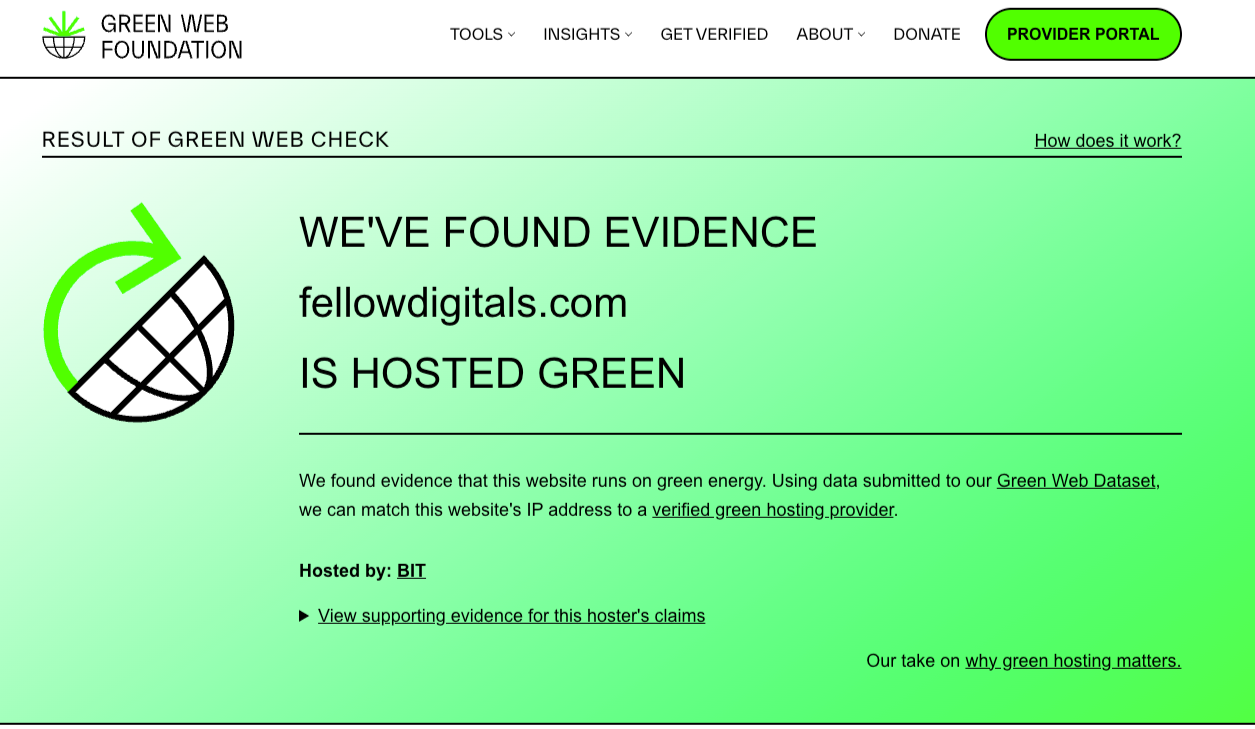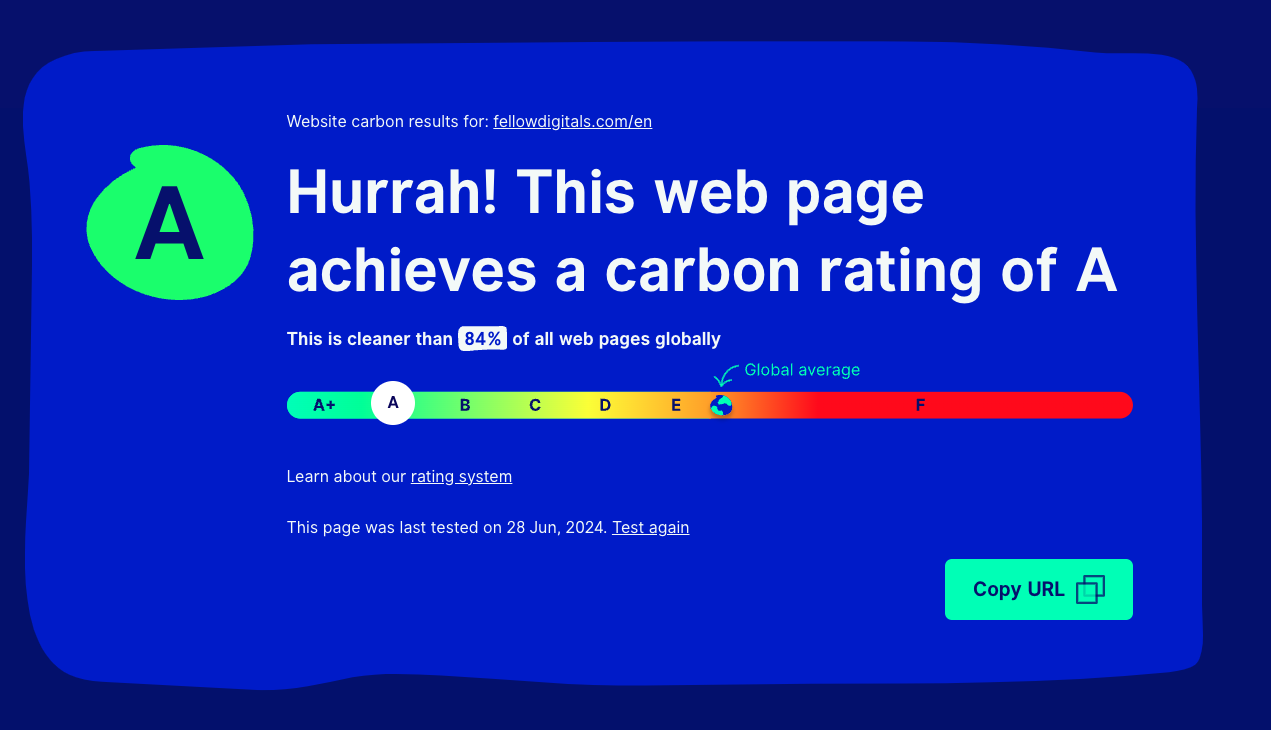Digital Products, Energy-consciously built
Digital Products
Energy-consciously built
Our activity in the digital world leaves a footprint in the real world. Visiting a single web page emits just half a gram of CO2 on average. But all those visits add up. In fact if the Internet was a country, it would be the 4th largest polluter. So developing digital products that are energy conscious can make a big impact.
What makes a digital product energy conscious?
Every part of a digital product costs energy. From the devices we develop them on, to the servers they run on, the network bytes travel over, to the browser end-users use the product in. While it’s too hard for us to measure everything, we’ve found two representative and quantifiable indicators for measuring a digital product’s energy impact:
Green hosting
Is the digital product hosted on green infrastructure? Some hosting providers use only renewable energy where others still rely on fossil. We verify a digital product uses green hosting using The Green Web Foundation validator.

CO2 footprint
Are CO2 emissions caused by using the product significantly lower than average? An average web page visit produces 0.5 grams of carbon on average. We verify how much CO2 a digital product emits and how that compares to other digital products using the Website Carbon Calculator.
If a product uses green hosting and the top 5 pages are all 50%+ cleaner than the average website, we consider it energy conscious.

Curious about the energy impact of your digital product?
Making an impact on energy
How can you make a digital product be more energy conscious and reduce its footprint?
Sign the Sustainable Web Manifesto
Making the commitment to save energy is the first step. You can make it official by signing the manifesto. Naturally, we did that too.
Use green hosting
That’s an obvious one. The trick is finding a green hosting provider that suits your product. It doesn’t have to be all or nothing. You could use green hosting for only parts of your product, ideally the ones consuming the most energy.

Reduce CO2 footprint
There’s so much you can do: select energy efficient frameworks and other technology, leverage caching on the server and in the browser, generate static web pages, use edge computing and serverless functions, optimise images, reduce asset sizes, ship less JavaScript, use system fonts, add a dark theme and much more.
Compensate emissions
It’s better to prevent than to compensate for emissions. But it’s better than doing nothing. To estimate a product’s CO2 footprint you can take the average emissions per page view and multiply that with the number of page views in your analytics software. Planting trees is one way to compensate, but there might be ones that better fit your business.
Up to 10% impact discount!
We’d love to help you make an impact. If you commit to building an energy conscious digital product, you’re eligible for our impact discount. Want to know more?

Would you like to minimise your digital footprint?
Our specialists can built your digital product energy consious. Discover the possibilities in a meeting, without obligations.